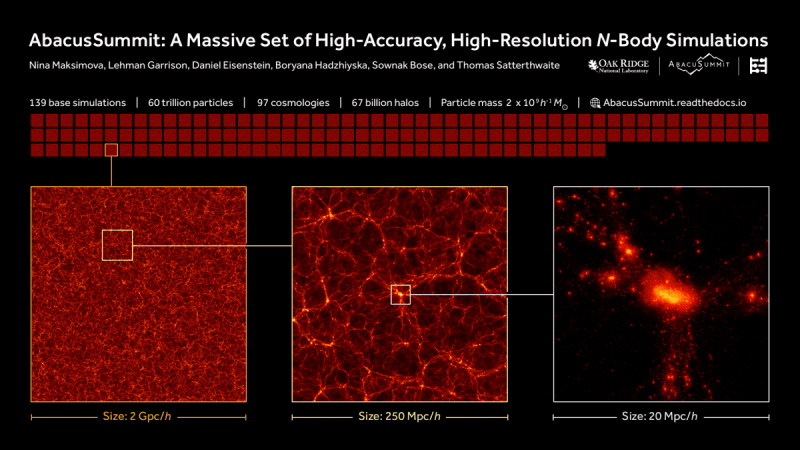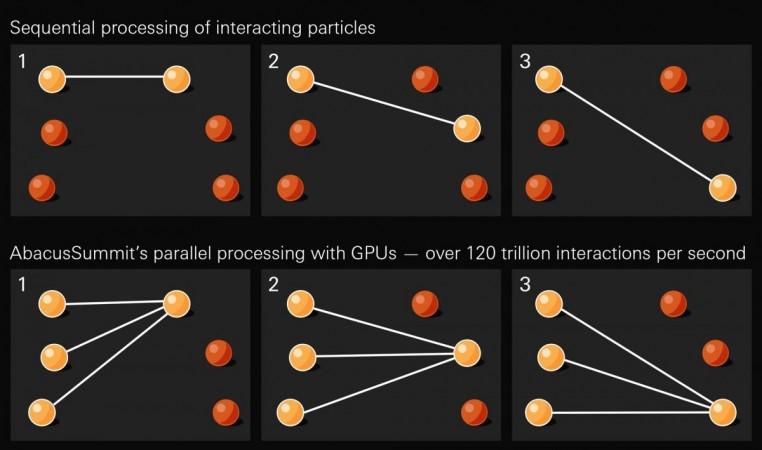Astrophysicists have developed the largest simulation package yet created, termed AbacusSummit. One of these large-scale missions' objectives is to enhance calculations of the cosmic and astrophysical parameters that govern how the cosmos acts and appears.
AbacusSummit was presented in many publications released in Monthly Notices of the Royal Astronomical Society by scientists at the Flatiron Institute's Center for Computational Astrophysics (CCA) in New York City and the Center for Astrophysics at Harvard & Smithsonian.

The suite
"This suite contains more particles than all previous N-body simulations united," says Lehman Garrison, the main author of one of the new publications and a CCA research fellow.
Made up of more than 160 simulations, it mimics how particles in a box-shaped cosmos move due to gravitational pull. These models, called N-body simulations, mimic the behaviour of dark matter that interacts exclusively with gravity.
AbacusSummit will soon be useful, as numerous surveys develop detailed maps of the cosmos in the next years. There is also the Dark Energy Spectroscopic Instrument and the Euclid satellite. Abacus uses parallel computer processing to calculate particle motion owing to gravitational pull.
The N-body issue for three or more enormous bodies is unsolved. The supplied calculations are approximations. It's normal to practise to freeze time, compute the overall force operating on each item, and then push each one accordingly. The procedure is then repeated somewhat faster. It did it by using creative programming, a new numerical method, and tonnes of computational power. The Summit supercomputer was indeed the world's fastest at the time.
The researchers discovered that Abacus' technique significantly outperforms other N-body codebases that partition simulations randomly based on particle dispersion.
Abacus' architecture allows it to update 70 million particles per second for each Summit node. The algorithm may also evaluate a simulation in progress, looking for dark matter patches suggestive of forthcoming surveys.

N-body details
Let's understand the N-body technique technical options that impact output accuracy.
The simulations start at z = 99, using second-order Lagrangian perturbation theory beginning conditions, with a target correction redshift of 12. The particles leave a cubic grid.
The simulations utilise Garrison et al (2018). It's 7.2 kpc/h (Plummer equivalent), or 1/40th of the original particle grid spacing. It is set in the actual distance and early limited at 0.3 of interparticle spacing.
With global time steps restricted at (LNA)=0.03, the simulation follows a criterion on the ratio of Mpc-scale velocity dispersion to Mpc-scale maximum acceleration. This is scaled by eta, which in these simulations is 0.25. 1100 time steps are needed to simulate z = 0.1.
But there is one number idea that enters into the data products that users of the outputs generally don't need to know. Abacus employs a CPD3 cubic grid to regulate coding speed. AbacusSummit's CPD is usually 170. Particle outputs are organised into y-z slabs of cells. These outputs are then grouped into "super slabs" of 51 or 52 slabs.

















